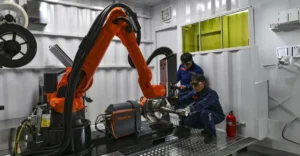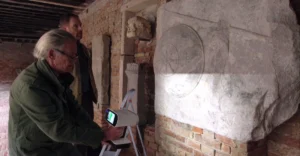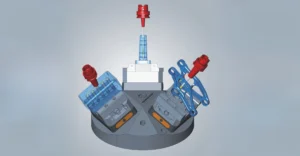Researchers develop 3D-printed thermoplastic wind blades for improved sustainability and performance.
A research team at the National Renewable Energy Laboratory (NREL) is creating new wind turbine blades using thermoplastics and 3D printing, with support from the US Department of Energy’s Advanced Manufacturing Office.
The initiative, headed by NREL senior wind technology engineer Derek Berry, aims to transform wind turbine blade production. The researchers seek to develop blades that are lighter, longer, less expensive, and more efficient.

Current commercial wind turbine blades have maintained the same basic design for decades, consisting of fiberglass skins joined with adhesive around internal support structures.
The team is replacing traditional thermoset materials with thermoplastics that can be broken down through heating, making the blades recyclable at the end of their operational life.
“Traditional materials can’t be reversed once they’re created,” Berry explained. “This prevents effective recycling.”
The thermoplastic components offer another advantage: they can be joined using heat and pressure rather than requiring heavy adhesives.
Working with partners including TPI Composites and Vanderbilt University, the researchers are utilizing 3D printing to create specialized internal structures for blades exceeding 100 meters in length.
The project targets reducing blade weight and cost by approximately 10% while shortening production time by 15%.
Read more : Nanoscale 3D Printing Unlocks Next Gen High Frequency Tech
Related research is also underway at Colorado State University, which is exploring fiber-reinforced composite printing, and at GE Research, which is developing a project focused on modular blade construction.































